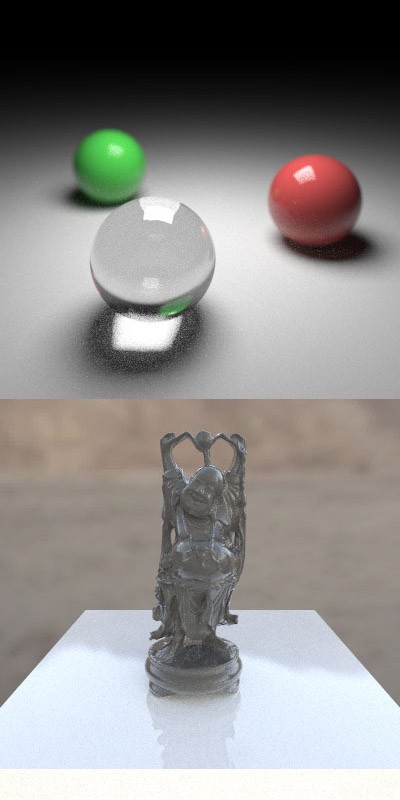 |

Submitted by , posted on 13 December 2004
|
 |

Image Description, by

These are some renders from my Monte-carlo ray tracer.
The top image took 886 secs to render and uses 3200 primary rays per pixel.
The bottom image took 883 secs to render and uses 1600 primary rays per pixel.
In the top image you can see sphere and plane geometry, depth of field, perfect specular reflection, diffuse reflection, and refraction with internal transmission.
Specular reflectivity is modulated by a Fresnel term in the red and green spheres.
Monte-carlo ray tracing is a very elegant technique which can handle all GI phenomena, such as specular reflections, caustics etc..
I use russian-roulette ray termination for unbiased estimation of the result of an infinite number of bounces :)
In the bottom image you can see the Stanford Happy Buddha (see http://graphics.stanford.edu/data/3Dscanrep/) rendered with image-based lighting. The model itself is 1,087,716 triangles. Ray/mesh intersection is accelerated with a kd-tree, something that took a good week of coding and tweaking to get working decently :)
The env-map used for the image-based lighting is the beach light probe from http://www.debevec.org/Probes/
The env-map is a HDR image, meaning it contains a larger range of intensities than normal 24 bit colour images.
A little bit more info and some more pics are available on my page http://homepages.paradise.net.nz/nickamy/
Nick Chapman aka Ono-Sendai
|
|

